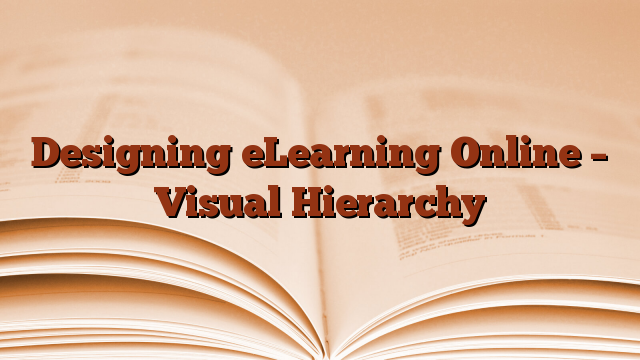eLearning online, just like any educational experience, depends on instructional design as it requires excellently designed courses that contain a full set of essential elements to ensure learning. This ensures that the important information is conveyed well to the learners. A proper instructional design process ensures the quality of an online course by identifying gaps in skills, knowledge, information and attitudes. These gaps are then filled by creating learning experiences based on eLearning best practices.
A very important part of eLearning online is how well courses are perceived by the target audience, as perception determines how well they will understand the content. In order to perceive, humans need sensory stimuli. In this type of learning, visual stimulation is crucial. Online learning relies heavily on visual elements such as text, graphics, images, videos and so on.
However, it is seldom explained that the visual channel of such courses can convey secondary messages through a visual hierarchy that communicates the relative importance of the visual elements in a course. As implied by the term itself, visual hierarchy leads learners to gradually shift their attention from the highest-ranked visual elements to the lower-ranked ones. The default hierarchy has three levels of importance that are equivalent, primary and secondary. However, this can still vary.
Having items in pecking order can reduce a lot of the stress associated with a cluttered screen. A learner would not know what to focus on first if graphics and the like are scattered all over the place, causing confusion and inhibiting learning. Information is provided to a hierarchically structured audience because it helps to highlight the main ideas and concepts. In other words, a screen with no visual hierarchy has little or no emphasis. In education, emphasis is an important way to really reinforce the absorption of information.
There are several ways to implement this in the instructional design for an eLearning online course. Usually, designers choose to combine different types of approaches to achieve maximum impact. Here are a few different ways a person can build visual hierarchy:
(1) Images. People tend to focus first on the images and graphics that appear on the screen, and then move on to other elements like the text. However, this tendency can be controlled to some extent as it depends on the design and treatment of a page or the entire course itself.
(2) spot. This is one of the most common ways to show progression. A good example of this would be standard newspaper positioning, where the hottest stories are at the top of the newspaper because that position attracts more attention than the bottom.
(3) color. In design, light colors used with contrast draw more attention while darker ones don’t. In order to build a hierarchy, it is important to make high-level elements more vivid and lower-level elements darker.
(4) size. Size is probably the most convincing way of showing hierarchy on a screen. There are several ways you can use this effectively. For example, make the title of a page larger, or make a relevant video take up most of the screen.
You can search the internet for other ways to build a visual hierarchy. It can really help people design higher quality courses.a
#Designing #eLearning #Online #Visual #Hierarchy
Thanks to Don Robert

Leave a Reply